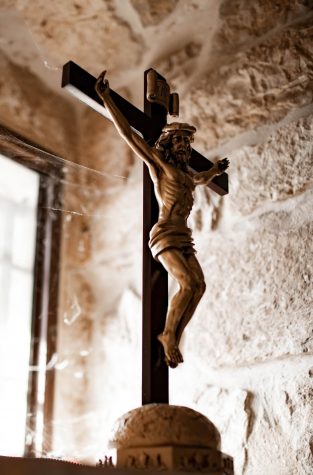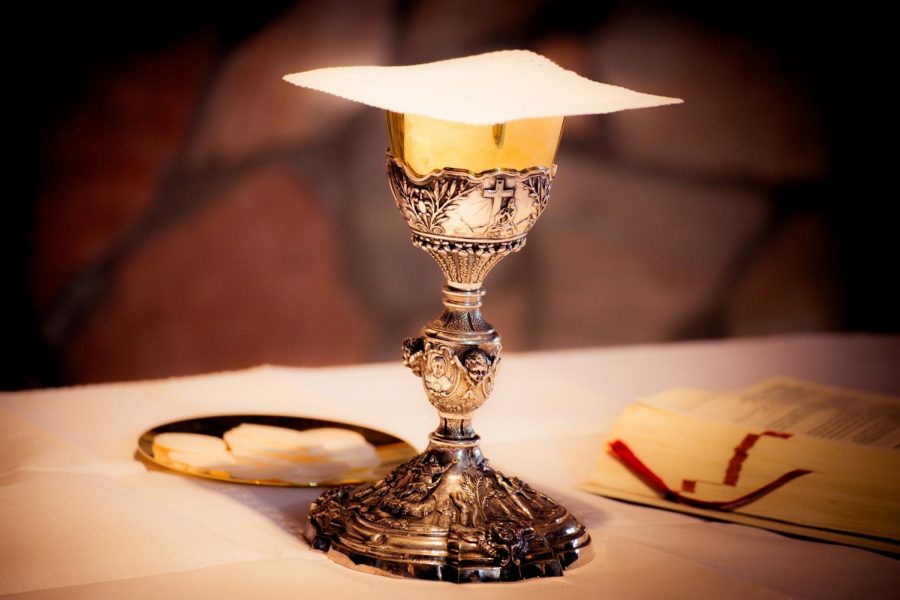Religious symbols that have much more meaning
Image by Robert Cheaib from Pixabay
There are many religions that have their own personal meaning behind symbols. Read this story to find out about symbols from the five of the most known and widely practiced religions: Christianity, Islam, Hinduism, Buddhism, and Judaism.
Religions embody the various sacred beliefs for which people all over the world show their worship and devotion. They span such wide concepts that can differ from one another, so symbols are often used to convey elements of a faith, making them important in the representation of these religious traditions.
Five of the most known and widely practiced religions are Christianity, Islam, Hinduism, Buddhism, and Judaism. Among these religions exists their iconic symbols that both indicate and separate them from other practices.

In Christianity, the Cross and the Crucifix serve as the principal symbols. They are also among the most well-known religious symbols in the world, “recalling the Crucifixion of Jesus Christ and the redeeming benefits of his Passion and death. The cross is thus a sign both of Christ himself and of the faith of Christians,” according to britannica.com.
The Crucifix in particular is specific to the religion of Christianity since it depicts the image of Jesus himself on the cross, as distinct from the symbol of just a bare cross.

Islam, the second largest religion by population, has a more complicated association with what is commonly believed to be its symbol: the Crescent Moon and Star. Despite how this icon of heavenly bodies is popularly used to represent their faith, Islam does not actually recognize graphic symbols or the use of symbolism as a whole in their practice. The early Muslim community did not really have an acknowledged symbol because of this.
According to learnreligions.com, “it wasn’t until the Ottoman Empire that the crescent moon and star became affiliated with the Muslim world.” Their rule over the Islamic nations eventually linked their symbol with the religion, despite the fact that Islam has a longer and more separate history from the Ottoman Empire. Contrarily, some believe that the symbols do have meaning that represent Islamic values. As stated by bbc.co.uk, “the five pointed star reflects the Five Pillars of Islam which are central to the faith.” The Crescent Moon and Star is also said to symbolize “the greatness of the creator.”

In Hinduism, believed by scholars to be the oldest religion in the world, the Om and the Swastika serve as their recognized symbol. The Om is composed of three Sanskrit letters and the three sounds a-u-m, which coalesce to form what is considered to be a sacred sound. According to religious-symbols.net, these sounds “represent several important triads: the three worlds of earth, atmosphere, and heaven; the three major Hindu gods.” This symbol is often found in emblems that adorn pendants, family shrines, and Hindu temples.
The Swastika on the other hand, stems from its namesake Sanskrit word that means “being happy.” Not to be confused with its diagonal version that was later adopted by the Nazis, this swastika is characterized to have four closed dots in between each of its bent branches. History.com supplies that the symbol also translates to “good fortune” and is associated with good luck as well as the cause of all life.

Buddhism is another religion originated from India that incorporates several symbols in its practice. Overall, they have what is called the Eight Auspicious Symbols, which are a set of objects that represent qualities of enlightenment. Storymaps.arcgis.com explores all eight of these symbols at length, the Dharma Wheel being one of the oldest and most iconic of them all. “The eight-spoked wheel is meant to represent the aspects of the Noble Eightfold Path, the practices said to lead one out of the cycle of rebirth.”
Onetribeapparel.com also adds that the “path revolves around eight ideals beginning with the word ‘right’” which lead to enlightenment.

In Judaism, the Star of David serves as their renowned symbol. It is composed of two overlaid equilateral triangles that form a six-pointed star, representing “the external level of the soul” connecting to “the external expression” of the creator, according to chabad.org. Among this, the star is also said to symbolize martyrdom and heroism.
Another Jewish symbol that is often seen decorating synagogues is the Menorah, a seven-branched candelabrum. It is a symbol far older than the Star of David, described in the Bible to be made out of pure gold and was used by Moses in the Temple of Jerusalem.
 When symbolism is so rich in the tellings of religion, it’s no wonder how they’ve become essential in our way of embracing these concepts. Some symbols bear more weight than others, in terms of their visual elements or on the history of their conception. But most are more alike than we’d think because of how we recognize and use these symbols to relate our beliefs on. They are a way to unite people who already share a common faith, not just serving as an icon of identity but also strengthening the relationship we have with what we believe in.
When symbolism is so rich in the tellings of religion, it’s no wonder how they’ve become essential in our way of embracing these concepts. Some symbols bear more weight than others, in terms of their visual elements or on the history of their conception. But most are more alike than we’d think because of how we recognize and use these symbols to relate our beliefs on. They are a way to unite people who already share a common faith, not just serving as an icon of identity but also strengthening the relationship we have with what we believe in.

Born and raised in the tropical islands of the Philippines, Marianne Barredo had a lot of new experiences moving to the US. Good thing for her, she likes...



